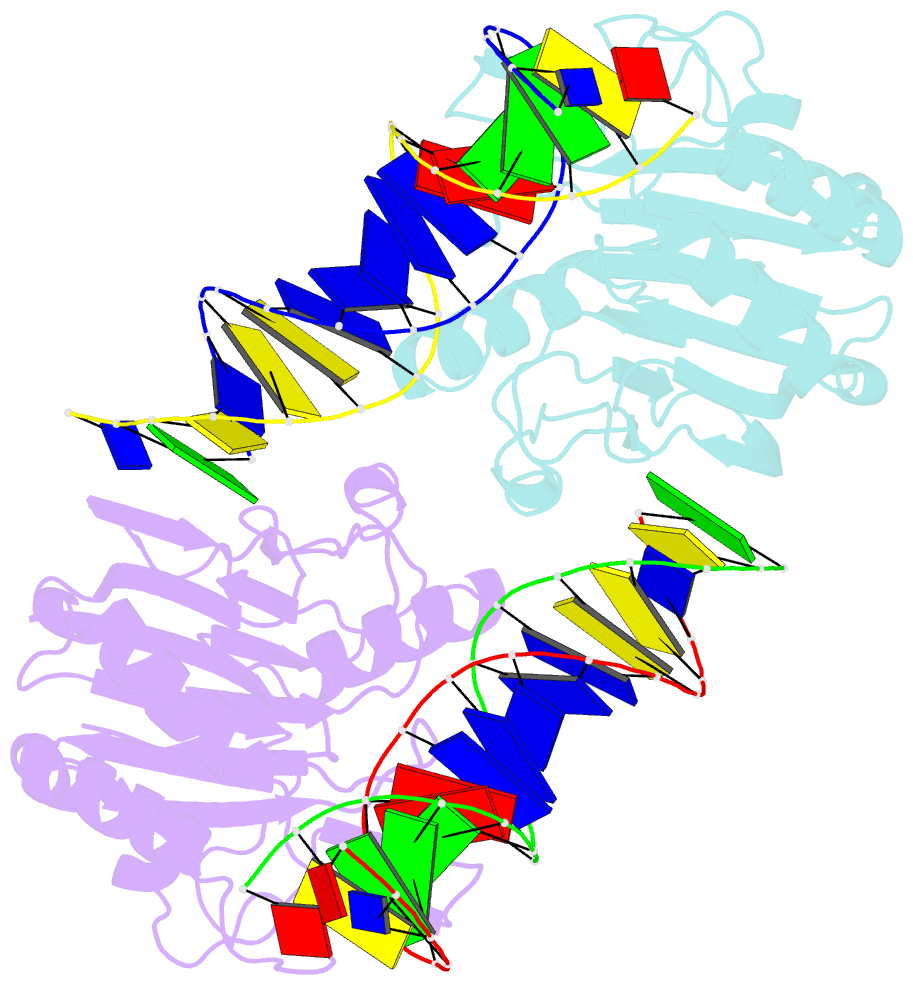Summary information and primary citation
- PDB-id
- 7n94; SNAP-derived features in text and JSON formats;
DNAproDB
- Class
- hydrolase-DNA
- Method
- X-ray (2.85 Å)
- Summary
- Line-1 endonuclease domain complex with DNA
- Reference
- Miller I, Totrov M, Korotchkina L, Kazyulkin DN, Gudkov AV, Korolev S (2021): "Structural dissection of sequence recognition and catalytic mechanism of human LINE-1 endonuclease." Nucleic Acids Res., 49, 11350-11366. doi: 10.1093/nar/gkab826.
- Abstract
- Long interspersed nuclear element-1 (L1) is an autonomous non-LTR retrotransposon comprising ∼20% of the human genome. L1 self-propagation causes genomic instability and is strongly associated with aging, cancer and other diseases. The endonuclease domain of L1's ORFp2 protein (L1-EN) initiates de novo L1 integration by nicking the consensus sequence 5'-TTTTT/AA-3'. In contrast, related nucleases including structurally conserved apurinic/apyrimidinic endonuclease 1 (APE1) are non-sequence specific. To investigate mechanisms underlying sequence recognition and catalysis by L1-EN, we solved crystal structures of L1-EN complexed with DNA substrates. This showed that conformational properties of the preferred sequence drive L1-EN's sequence-specificity and catalysis. Unlike APE1, L1-EN does not bend the DNA helix, but rather causes 'compression' near the cleavage site. This provides multiple advantages for L1-EN's role in retrotransposition including facilitating use of the nicked poly-T DNA strand as a primer for reverse transcription. We also observed two alternative conformations of the scissile bond phosphate, which allowed us to model distinct conformations for a nucleophilic attack and a transition state that are likely applicable to the entire family of nucleases. This work adds to our mechanistic understanding of L1-EN and related nucleases and should facilitate development of L1-EN inhibitors as potential anticancer and antiaging therapeutics.





